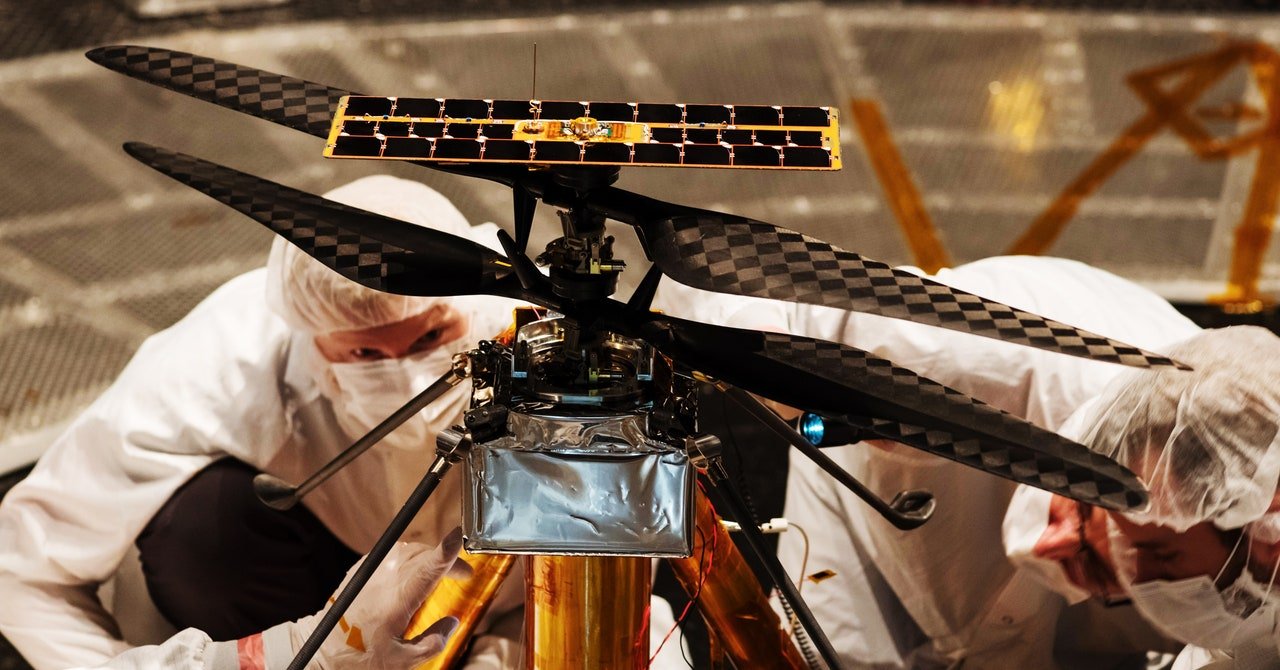Ingenuity, NASA’s autonomous Mars helicopter, was only meant to complete five flights. But since its history-making first flight in April 2021, the helicopter has flown 28 times, and preparation is underway for the 29th. Depending on dust levels and the schedule of the rover Perseverance, that flight could take place as soon as later this week. But now Ingenuity faces a new challenge: It’s unclear if the helicopter will survive the coming Martian winter, which begins in July.
Since a Martian year amounts to roughly two years on Earth, and the helicopter is in the northern hemisphere, this is Ingenuity’s first winter. As the solstice approaches, days are getting shorter and nights longer, and dust storms could become more frequent. That all means less sunlight for the solar panels mounted above the helicopter’s twin 4-foot rotor blades. Dust on solar panels recently spelled the end of operations for NASA’s InSight Mars lander, and the effects of cold on electronics is believed to have played a role in the end of the Opportunity and Spirit Mars rover missions.
“We believe it’s survivable,” Dave Lavery, NASA’s program executive for the Ingenuity Mars Helicopter, told WIRED, but “every extra day is a gift.” JPL Ingenuity team lead Teddy Tzanetos recently wrote in a NASA blog post that “each sol (Martian day) could be Ingenuity’s last.”
Last month, Ingenuity briefly lost contact with Earth due to a decline in battery life, the majority of which is dedicated to heating. NASA reestablished contact with Ingenuity after two days, but due to battery levels falling below 70 percent and persistently lower temperatures, Ingenuity will suspend use of onboard heaters at night to preserve power throughout the four-month winter. Heaters typically kick in when the temperature falls below -5 Fahrenheit, a figure reduced to -40 after the battery power shortage and communications outage last month. Outdoor temperatures during the Martian winter can drop to -112 at night, increasing the likelihood of damage to electronics inside the helicopter.
On Monday, NASA announced the failure of a sensor, delaying flight 29 and requiring NASA to uplink a software patch and rely on another sensor to govern Ingenuity’s navigation algorithms.
Dust storms are an X factor. A study published in May from a team at the University of Houston examined data from NASA sensors over the span of four Martian years, and found that imbalances in solar energy and warm weather in the south increase the likelihood of massive dust storms that can blanket the entire planet. Spring and summer are known as storm seasons, but the likelihood of severe storms reduces as the north approaches the winter solstice, says University of Houston associate professor Liming Li. But there’s a caveat: The study is global and does not take into account any particular region. Conditions can also be different in craters than on the rest of the surface, and the helicopter is operating in the Jezero Crater.
“It’s tough to say,” Li said when asked whether more dust storms are on the way. “It’s hard to give a clear picture for the radiation budget in the Jezero Crater before we really measure it.”
As Ingenuity halts normal flight activity, the team will focus on transferring data like flight performance logs and high-definition images from the last eight flights and making software upgrades. Based on a climate model, NASA expects solar energy levels to rebound to a level that allows the resumption of normal activity this fall. By September or October, if Ingenuity is able to regain the ability to heat its systems at night, it could resume regular flight operations, scouting potential places for the Perseverance rover to stash a collection of rock and soil samples and explore what scientists believe used to be a river delta within the Jezero Crater.

Leave a Reply
You must be logged in to post a comment.